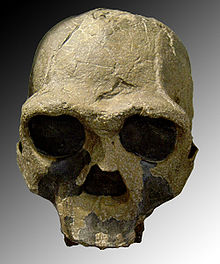Are evolutionists really scientists? You decide after reading the description of the 'end all be all' hypothesis of 'hopeful monsters'- It's quite clear that GoldSchmidt represents that majority of evolutionary scientific thought (Even htough some deny it)- and as such, the whole Evolutionary hypothesis should be htrown out of science classes altogether as nothign but a nutjob hypothesis because Goldie believes what he does. "In the 1930s, paleontologist Otto Schindewolf concluded that the missing links in the fossil record were not really missing at all, but rather were never there in the first place! Schindewolf proposed that all the major evolutionary transformations must have occurred in single large steps. He proposed, for example, that at some point in evolutionary history, a reptile laid an egg from which a bird was hatched! This bizarre notion was championed in 1940 by the geneticist Richard Goldschmidt of the University of California at Berkeley. Like Schindewolf, Goldschmidt resigned himself to the fact that true transitional forms were not found despite over a hundred years of searching for them, and that evolutionary theory would simply have to accommodate this fact.
Goldschmidt sought to advance Schindewolf's notion of evolution through single large steps by trying to imagine a plausible mechanism for it. He suggested that the answer might lie in what are known as embryological monsters, such as the occasional birth of a two-legged sheep or a two-headed turtle. Goldschmidt conceded that such monsters rarely survived very long in nature, but he hoped that over a long period of time some monsters might actually be better suited to survive and reproduce than their normal siblings. Goldschmidt named this monstrously hopeless speculation the "hopeful monster theory." Since there was not even the slightest shred of evidence to support the hopeful monster theory, it was dismissed with derision by almost all evolutionists of his time." http://ncseweb.org/creationism/analysis/hopeful-monsters There you have it folks- proof positive that that Macroevolution is nothign but a psychotic's delusionary muddled hypothesis.
The creationist lie that there are no transitionals is ludicrous, and quote-mined repetition won't make it any better.
You write, "It's quite clear that GoldSchmidt represents that majority of evolutionary scientific thought."
Sorry, that is absolutely false and if you did any research at all you would know better. But your research consists of quote mining from creationist websites. That is the deliberately ignorant leading the willfully blind.
For the lurkers, as you won't accept any evidence that contradicts your a priori beliefs, here is a transitional. Note its position in the chart which follows (hint--in the right center):
Fossil: KNM-ER 3733
Site: Koobi Fora (Upper KBS tuff, area 104), Lake Turkana, Kenya (4, 1)
Discovered By: B. Ngeneo, 1975 (1)
Estimated Age of Fossil: 1.75 mya * determined by Stratigraphic, faunal, paleomagnetic & radiometric data (1, 4)
Species Name: Homo ergaster (1, 7, 8), Homo erectus (3, 4, 7), Homo erectus ergaster (25)
Gender: Female (species presumed to be sexually dimorphic) (1, 8)
Cranial Capacity: 850 cc (1, 3, 4)
Information: Tools found in same layer (8, 9). Found with KNM-ER 406 A. boisei (effectively eliminating single species hypothesis) (1)
Interpretation: Adult (based on cranial sutures, molar eruption and dental wear) (1)
See original source for notes:
Source: http://www.mos.org/evolution/fossils/fossilview.php?fid=33

Source

